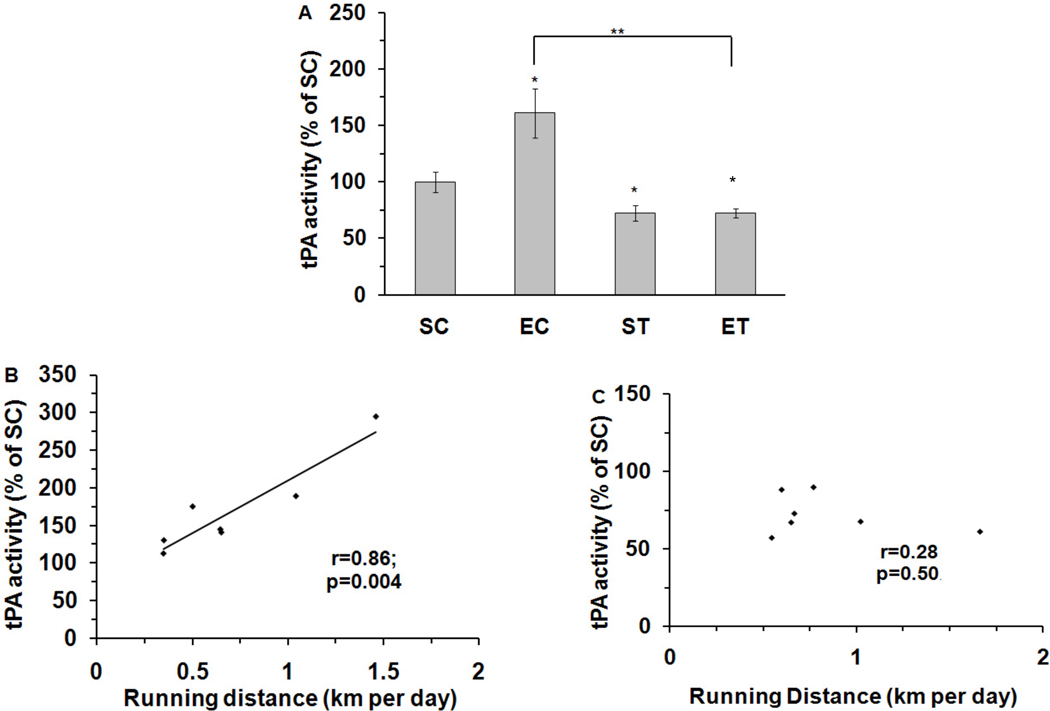Figure 2.
Effects of exercise and tPA-STOP on tPA activity levels in the rat hippocampus. (A). tPA-STOP completely abrogated exercise-increased tPA activity (EC: 161%; ET: 72%). Its activity was also inhibited by tPA-STOP in the sedentary group (ST: 72%). (B). There was a positive correlation between running distance and tPA activity in EC animals (r=0.86, p=0.004). (C). This correction was disrupted after tPA-STOP administration (r=0.28, p=0.50, ET group). SC: Sedentary/Control; EC: Exercise/Control; ST: Sedentary/tPA-STOP; ET: Exercise/tPA-STOP. Results are expressed as means ± S.E.M. *p<0.05, **p<0.01, two-way ANOVA followed by Tukey’s range test, n=7/group.

